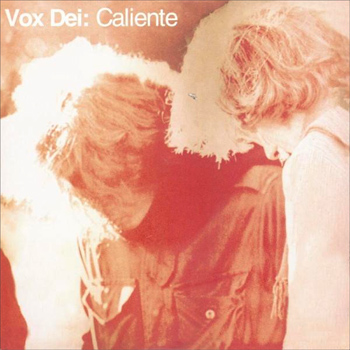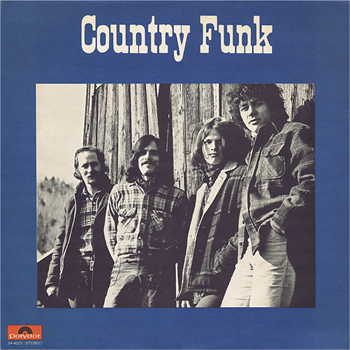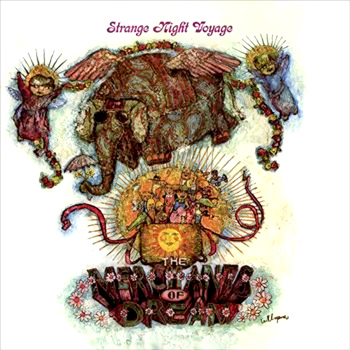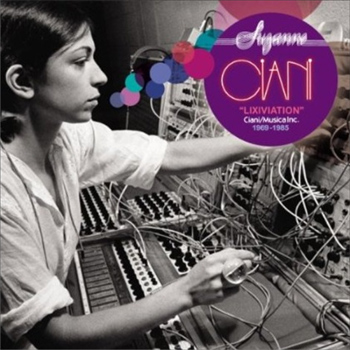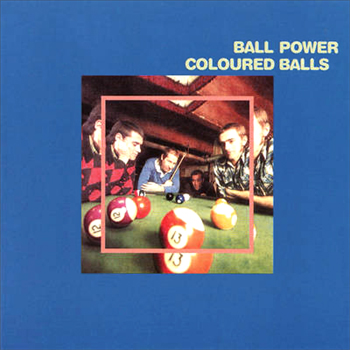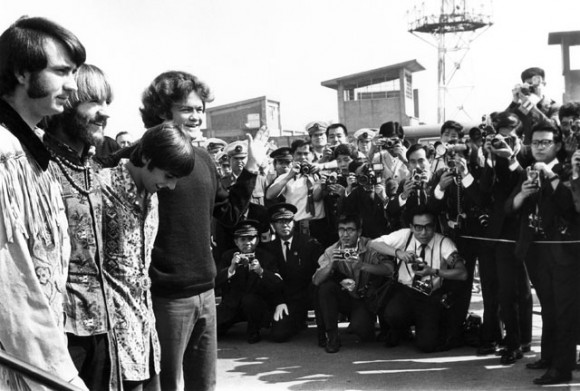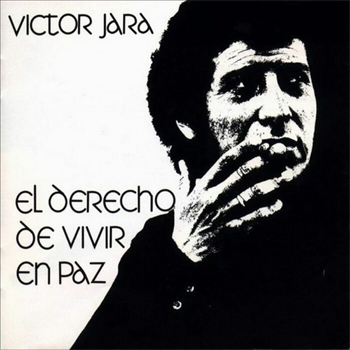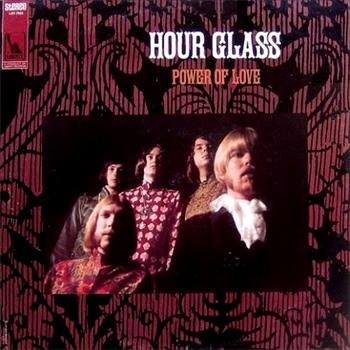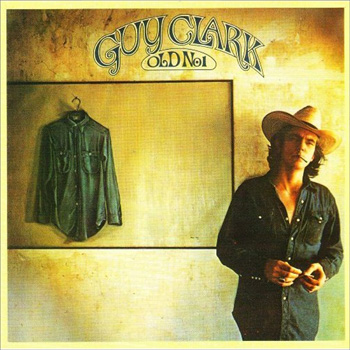Groep 1850 “Agemo’s Trip to Mother Earth”
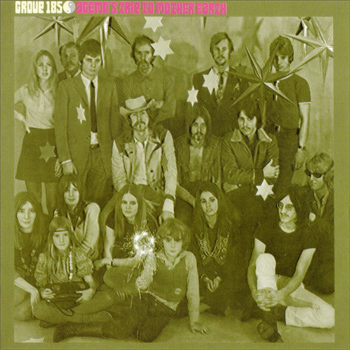
It’s finding rare gems like this that makes trudging through the dross in charity shop CD racks so addictive. I stumbled with fascination upon Agemo’s Trip To Mother Earth with its blurry, greyish cover photo depicting a large group of hippie folk of various ages. At first I thought it was by some retro psych outfit from the 90s, but a little research online revealed Groep 1850 to be a genuine 1960s psychedelic rock band from the Netherlands. Originally founded in 1964 as R’n’B group the Klits “ being an abbreviation of Klitoris, meaning exactly what you think it means “ they changed their name to Groep 1850 “ Groep for group, 1850 not explained “ and, following several stylish freakbeat and psychedelic singles, released their debut album on Philips in 1968.
Lyrically based around the hippie-dippy saga of Agemo, son of Dog from the Nirvana-like planet Irotas, who visits Earth to experience the urban paranoia and depravity of modern life, the album’s musical motifs draw shamelessly on Saucerful Of Secrets-era Pink Floyd but also evince a powerful West Coast acid rock influence. There is too a healthy dose of humour not present in either the Floyd’s straightlaced presentation or the similarly unsmiling Californian product, exacerbated by the band’s singing in strongly accented English with occasional Dutch interjections; clearly evident is the combination of instrumental virtuosity and vocal weirdness that would produce commercial success for their compatriots Focus a few years later. Peter Sjardin’s keyboard work is workmanlike and mostly mixed well back, but the lead guitar of Daniël van Bergen is unique and strongly forefronted, with penchants for atonality and sustain. Beer Klasse’s trapwork is also excellent, being simultaneously duck’s-arse-tight and jazzily freeform. The production by Hans van Hemert is splendidly sympathetic to the band’s psychedelic direction, with heavily treated vocals, sound effects, found sounds, phasing, stereo panning and all the tricks of the studio wholeheartedly employed.
An introductory metallic racket gives way to the acid-pop of opener Steel Sings as hard guitar chords and flying-saucer electronic bleeps announce Agemo’s arrival on Earth. Little Fly is heralded by the groan of an ancient door’s hinges and a female voice intones a brief litany before thudding drums, oriental Hammond licks and coruscating guitar frame the song’s stately harmony vocals. You Did It Too Hard is a brief nonsense item with a cheerful riff and honking saxes giving way to a gibberish dialogue by gnomish voices. The closing Refound and Reborn form a two-piece suite in a soft, hallucinogenic vein reminiscent of the Floyd’s Cirrus Minor with acoustic guitars and flutes accompanying the dreamy harmonised voices. The undoubted high spot is the astonishing procession of sounds that makes up the thirteen-minute full-blown musical acid trip I Put My Hands On Your Shoulder, including infinitely sustained guitar, crazy, reverbed harmonica, swooping keyboard expeditions and a disembodied, demented bilingual dialogue over a stuttering, heavily flanged drum solo before ending with a clap of thunder “ a wigged-out mess that really works.
The album was released in Northern Europe and the UK (anglicised as Group 1850), but it barely sold at home and tanked totally everywhere else. Somehow they managed to cobble together a second studio collection, Paradise Now, more progressive and doomy but quality-wise as good as Agemo, plus a live set, but these sadly went the same way. Sjardin struggled on with different lineups until 1975, releasing a couple more albums in a jazz-rock vein before bowing to the inevitable. There’s not a huge amount of information about Groep 1850 out in cyberspace but a good critical discography can be found here.
Belatedly recognised as a European psych landmark, Agemo has had three CD reissues, the latest a 2002 budget offering on the Rotation imprint which appears to be a legit license. As well as Agemo‘s seven songs this offers nine excellent pre-Agemo bonus tracks including the brilliantly absurd Mother No-Head, built around the melody of Frère Jacques and provided with alternative English and French lyrics. Oh, and that blurry album cover? It was originally offered in 3-D, with a free pair of 3-D specs thrown in. Sadly the reissue doesn’t reproduce that imaginative feature.
mp3: Little Fly
mp3: You Did It Too Hard
![]() Original | 1968 | Philips | search ebay ]
Original | 1968 | Philips | search ebay ]
![]() Reissue | 2002 | Rotation | buy here ]
Reissue | 2002 | Rotation | buy here ]
